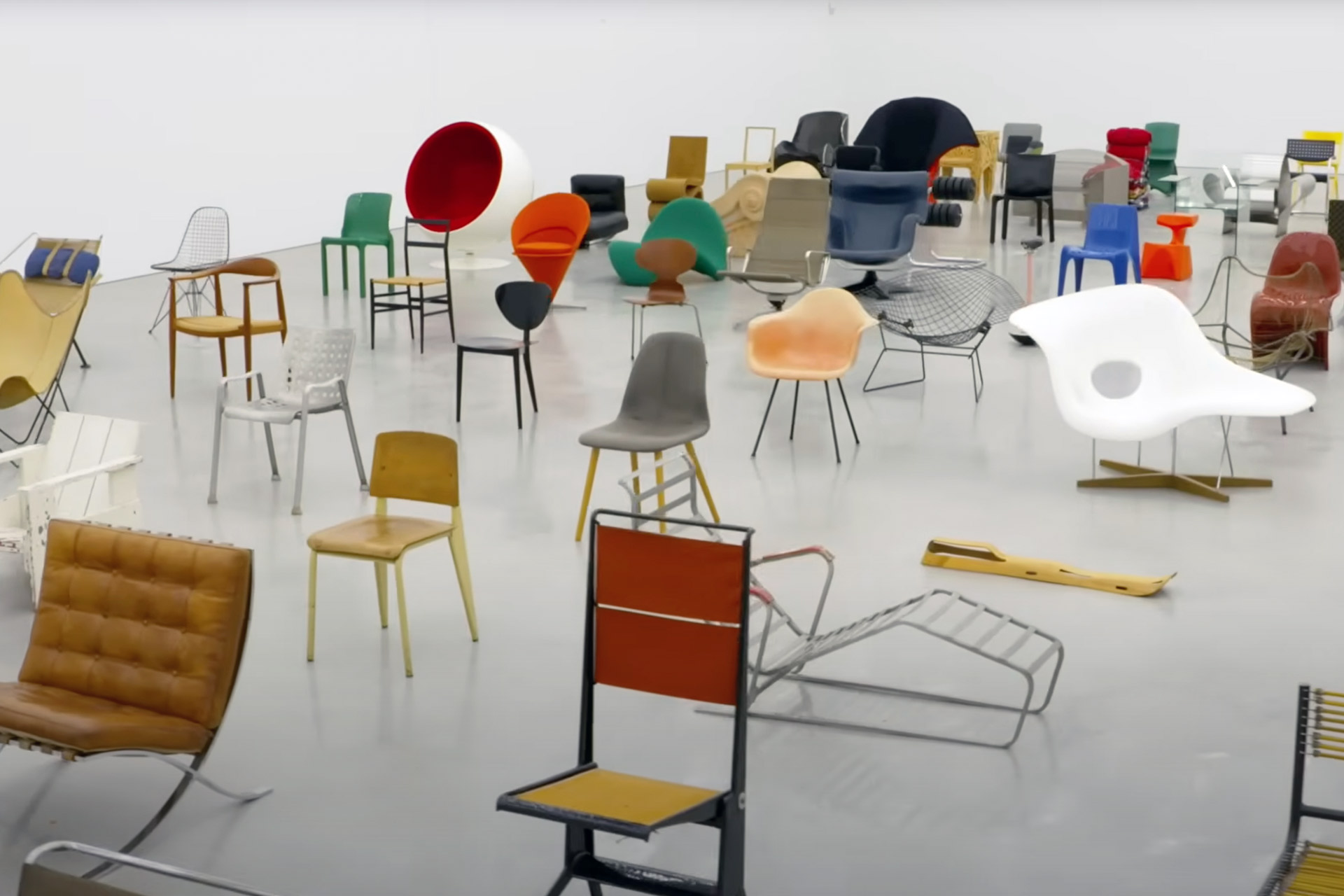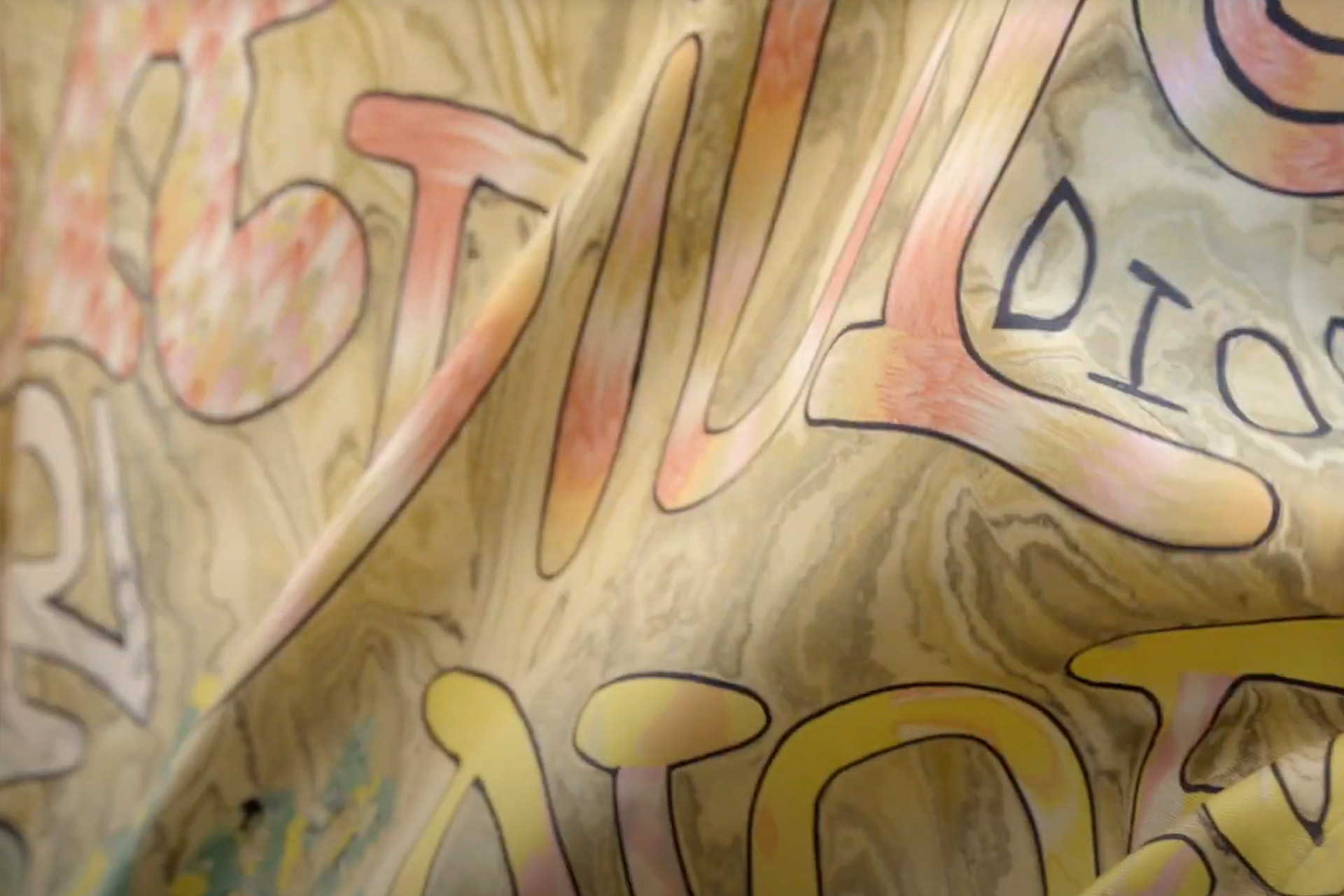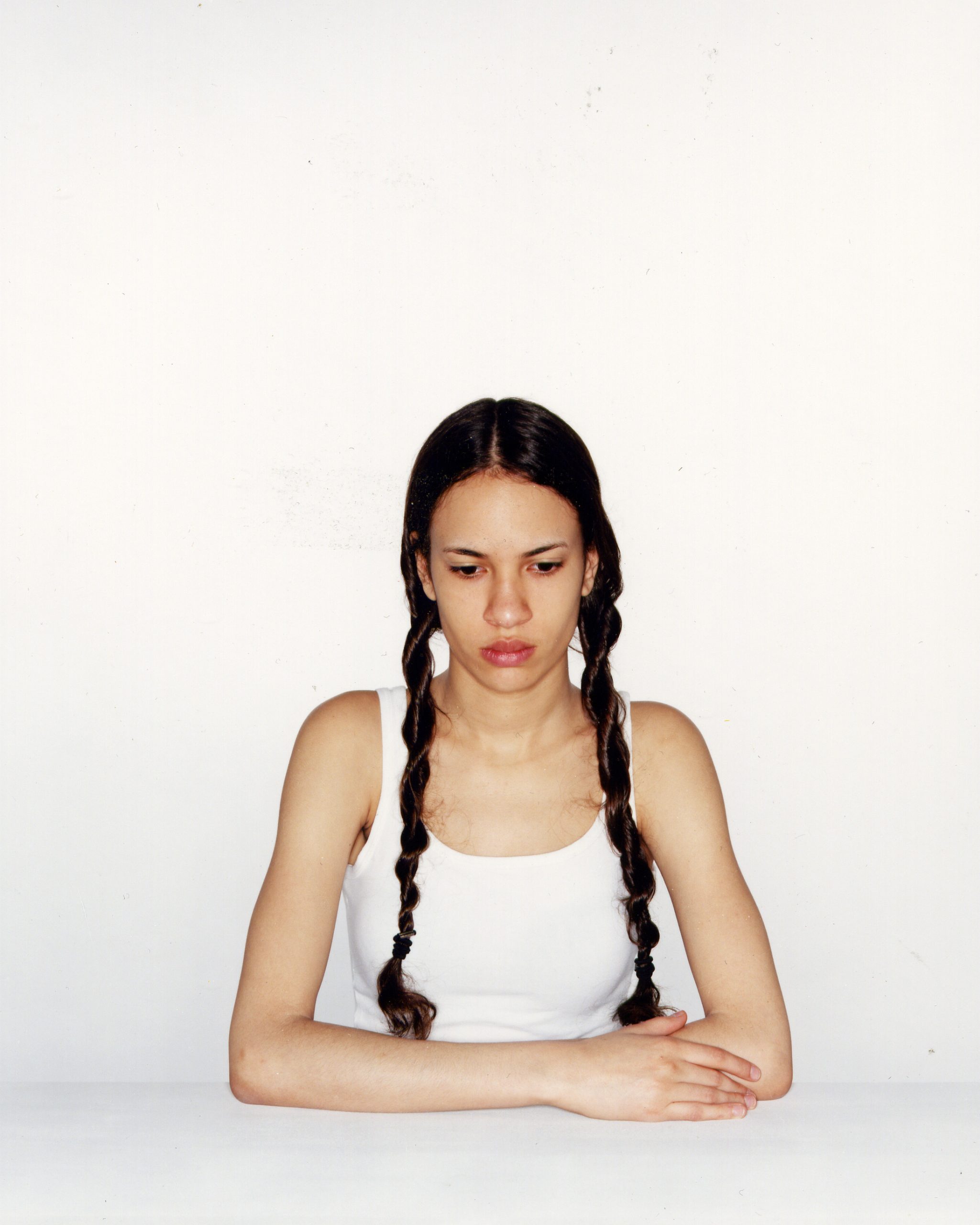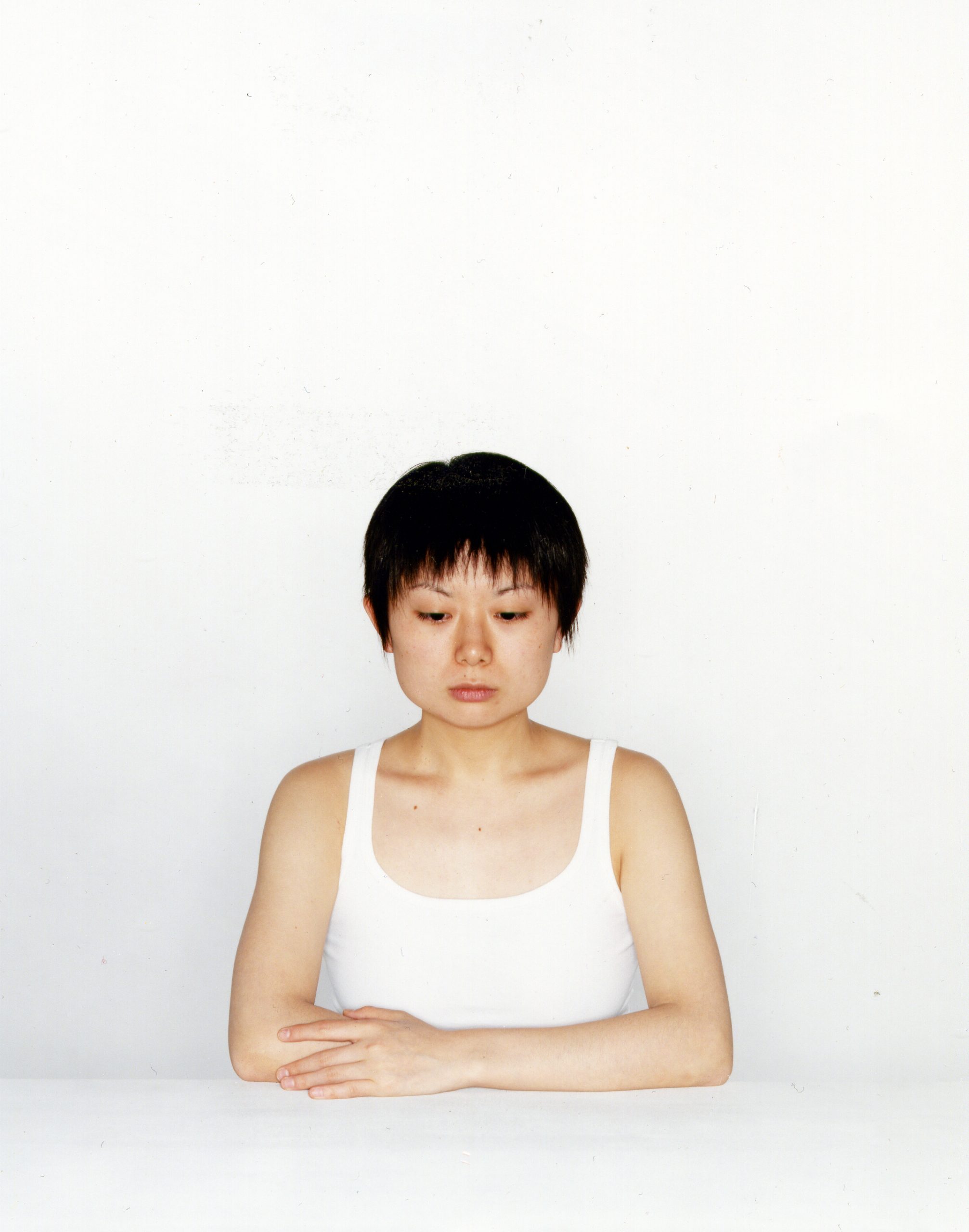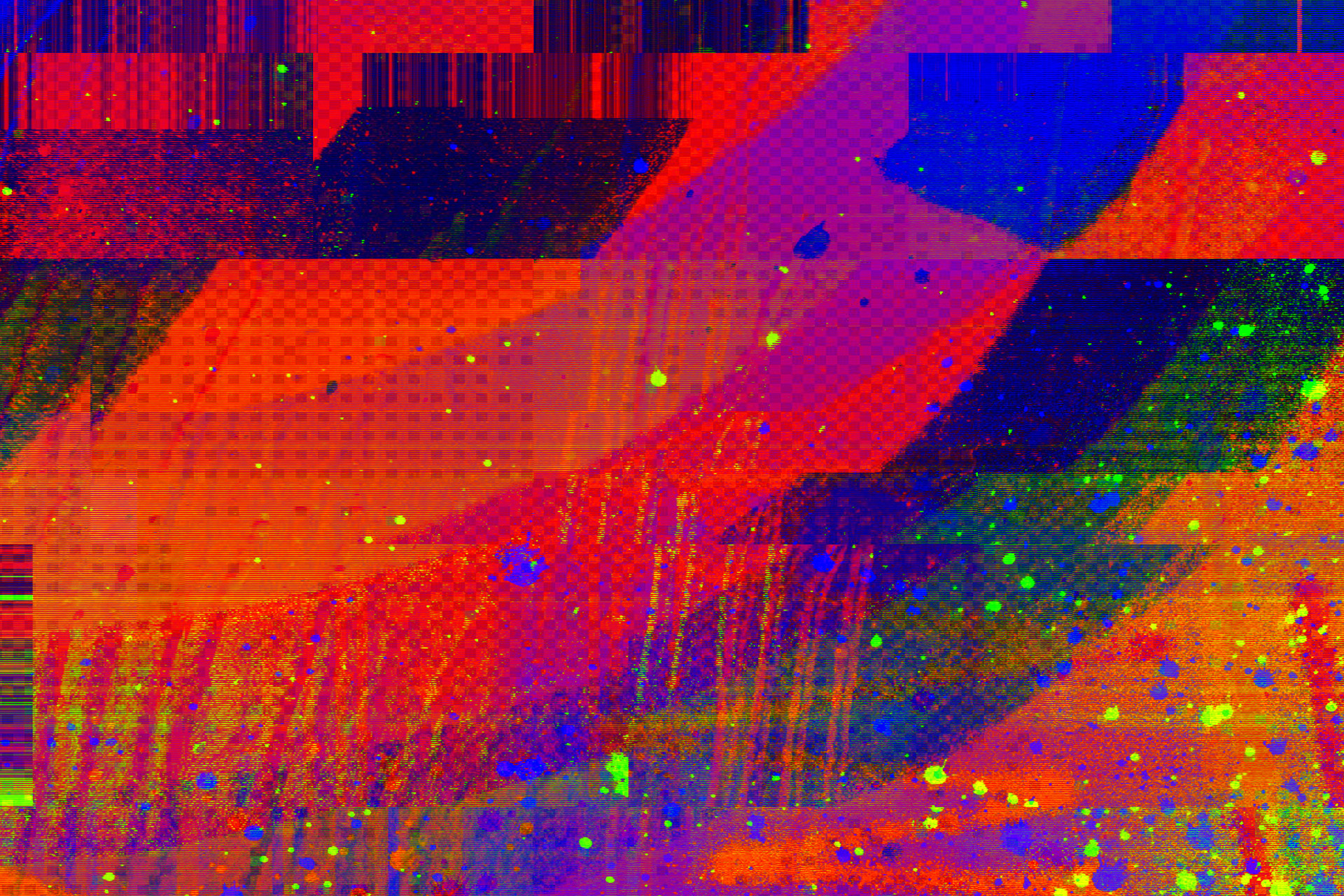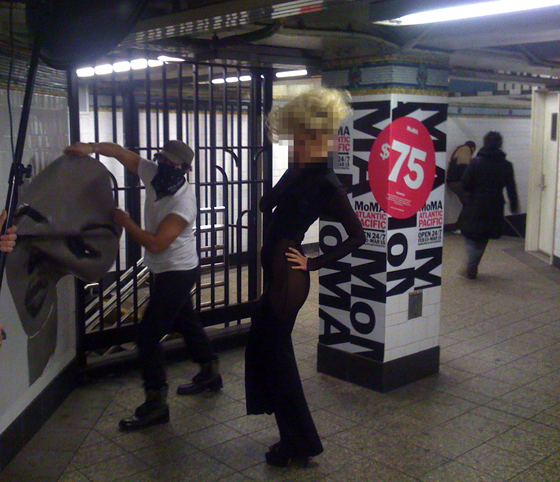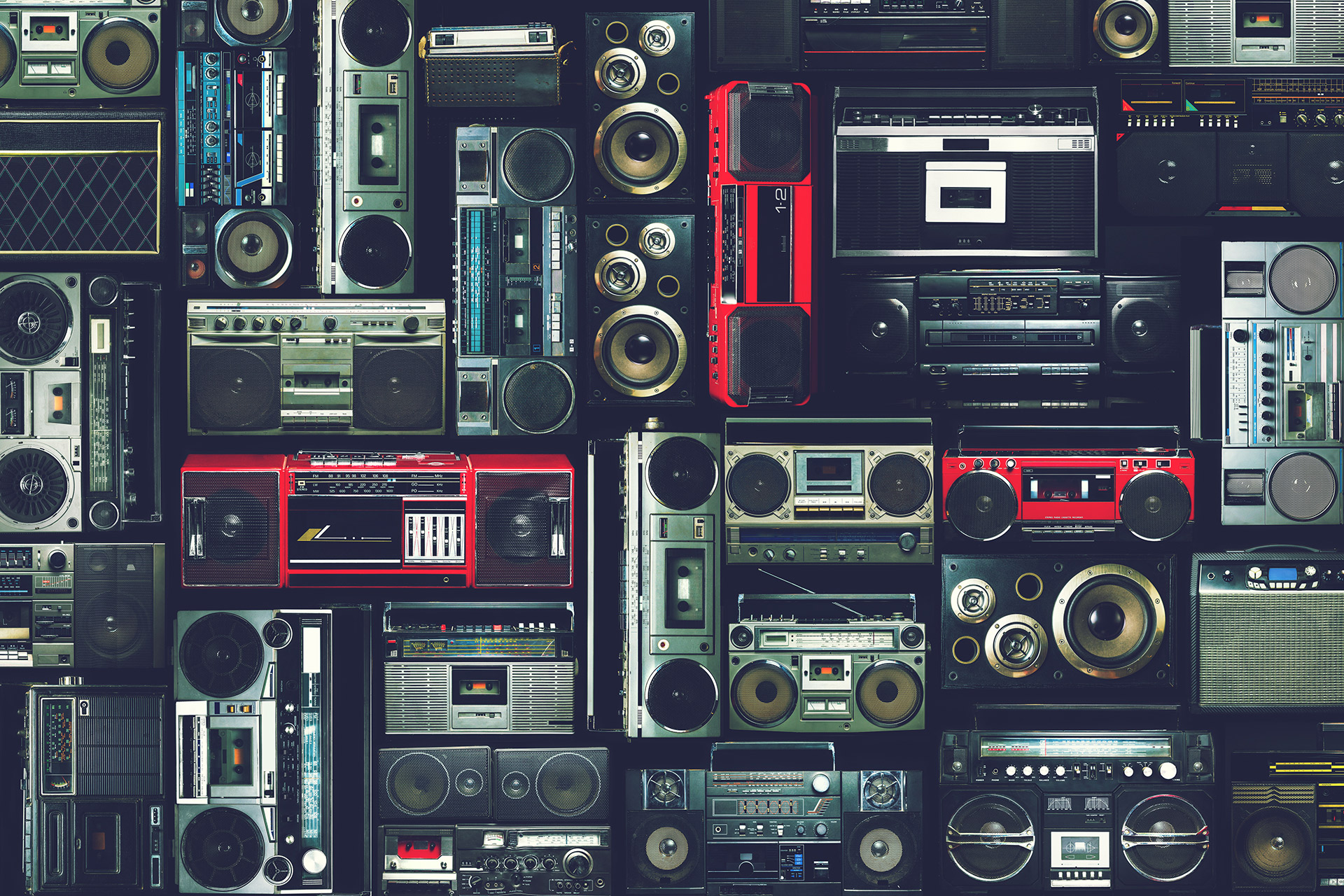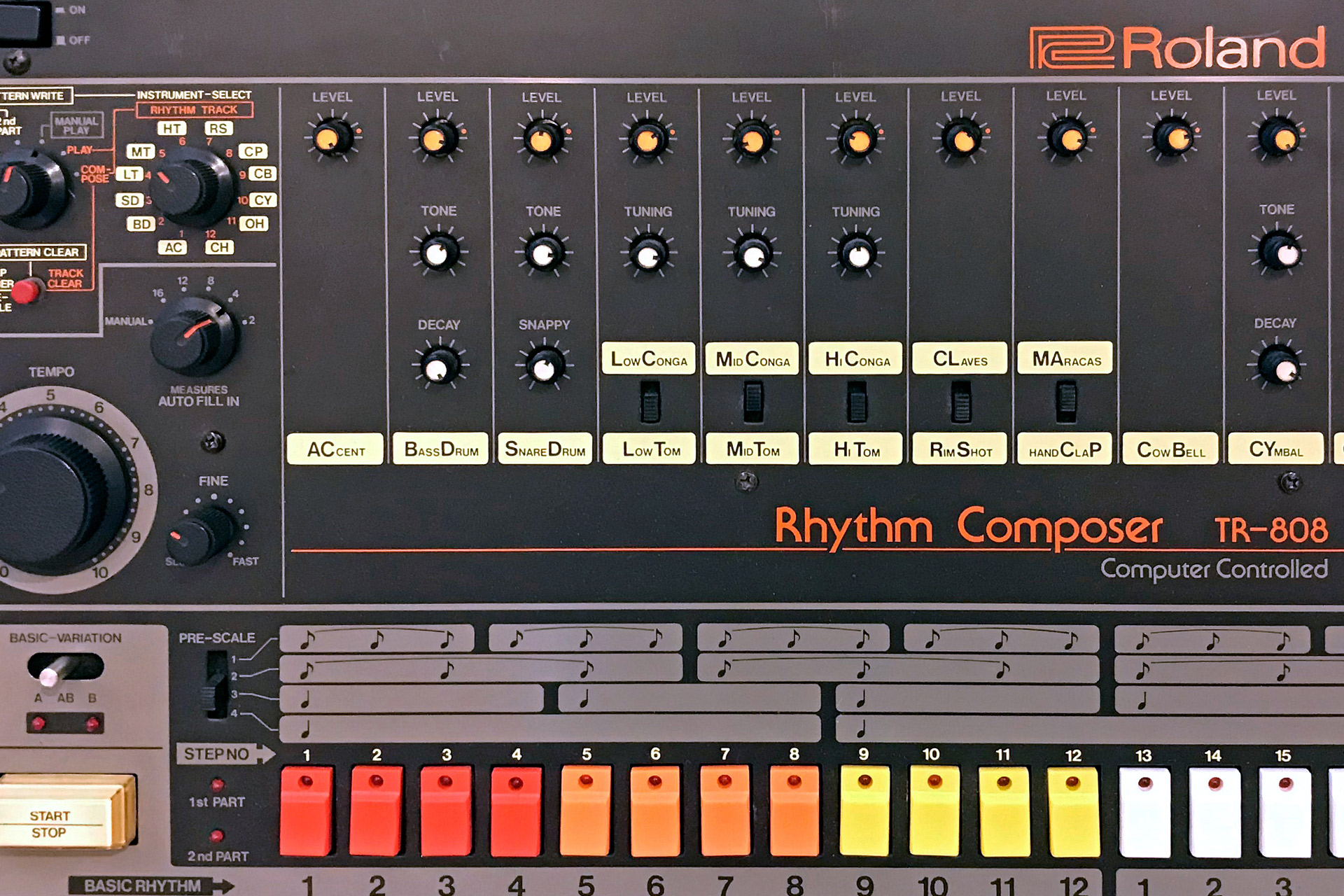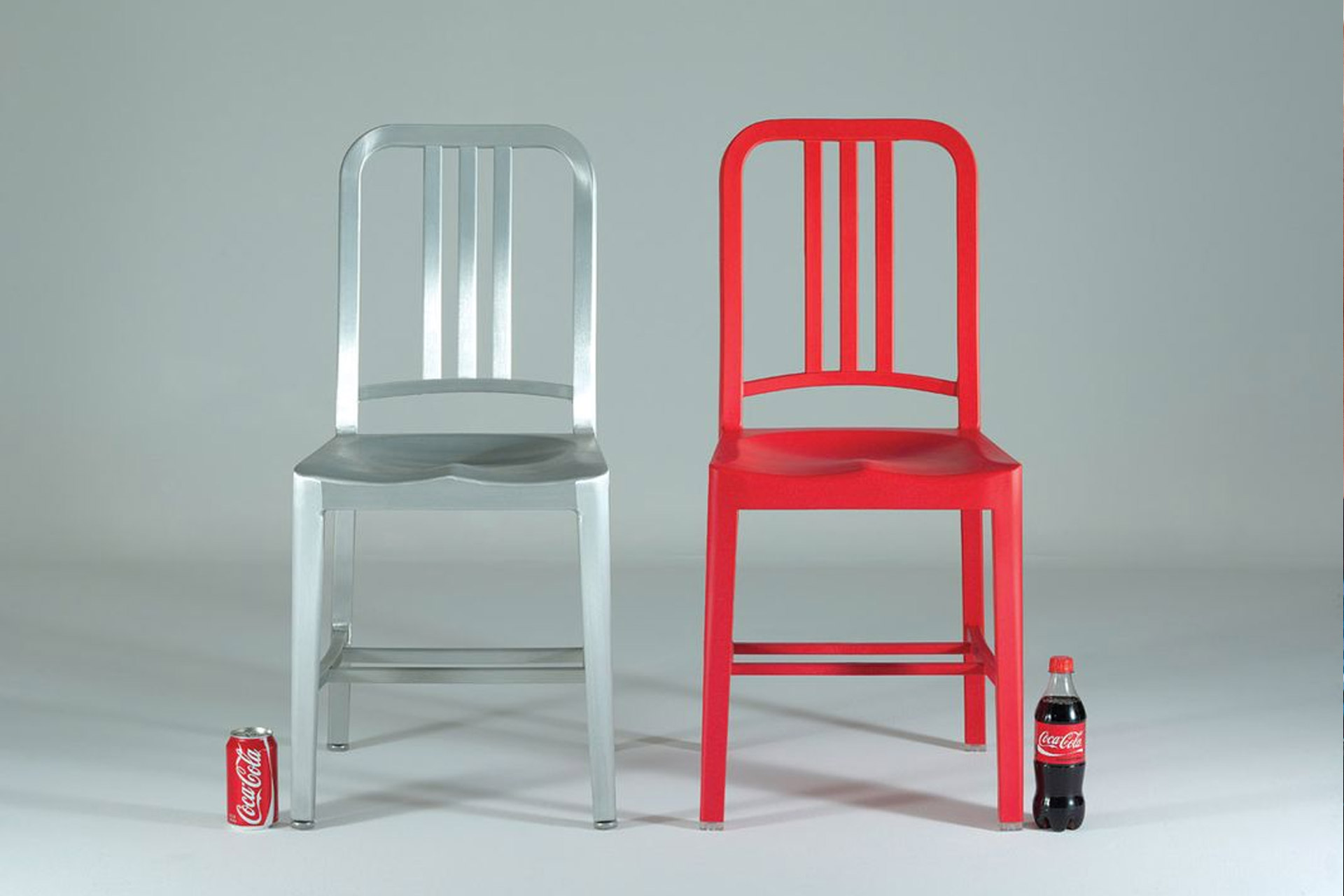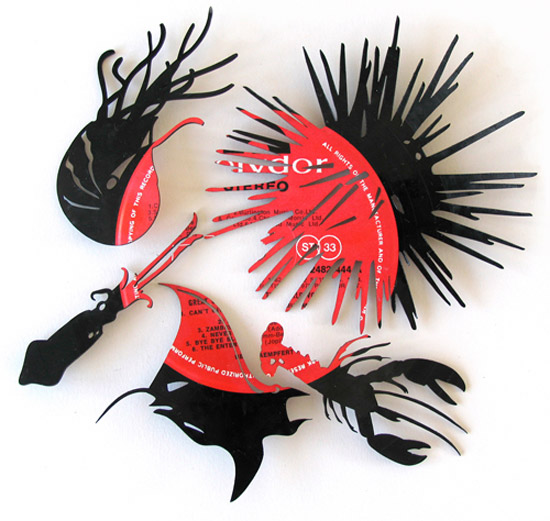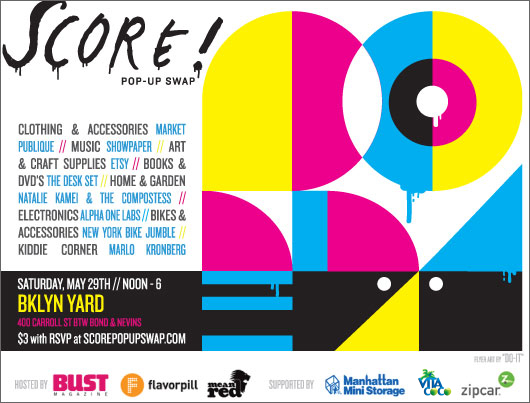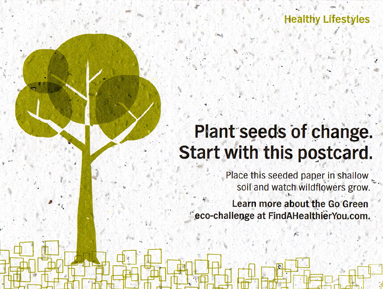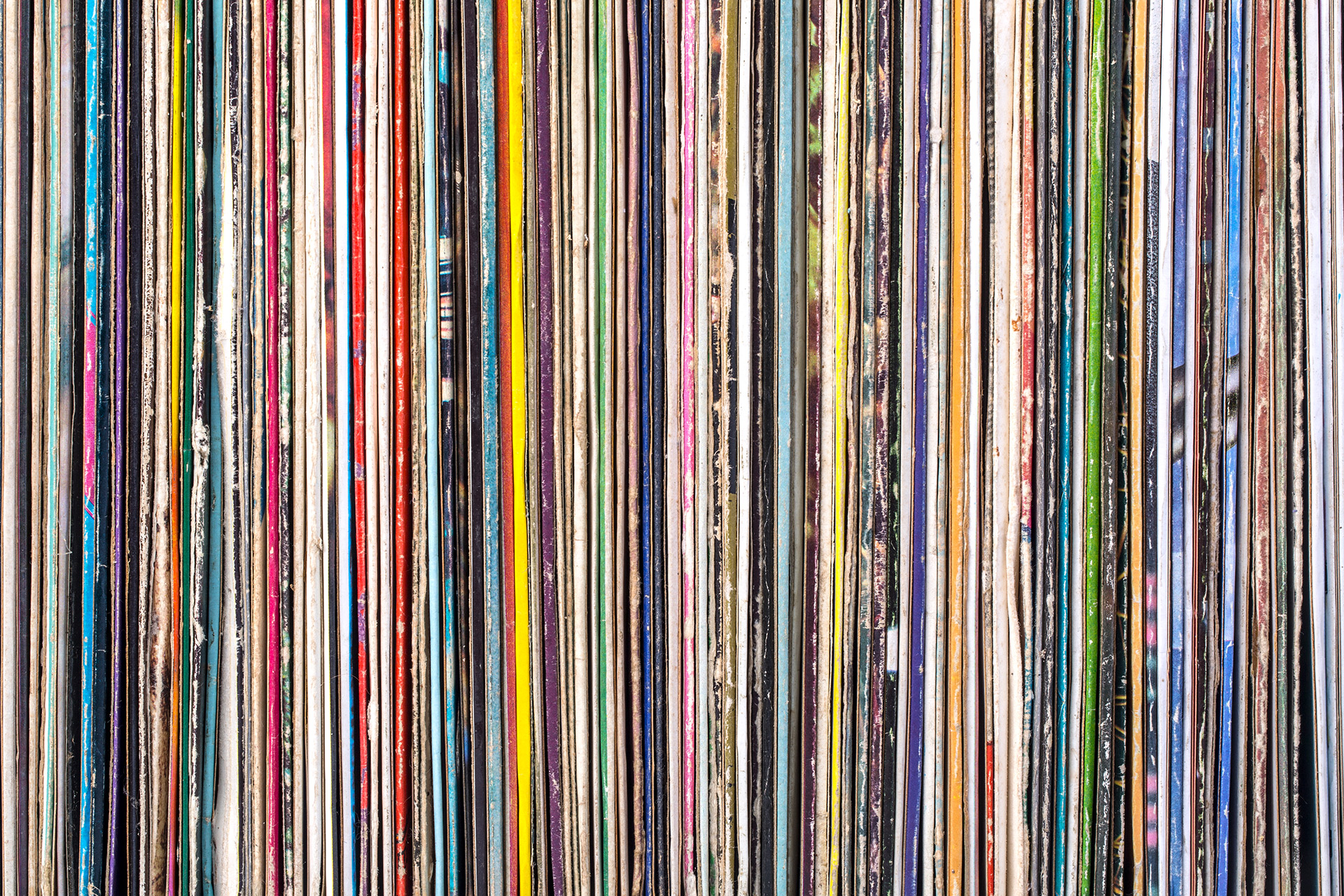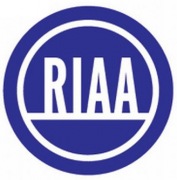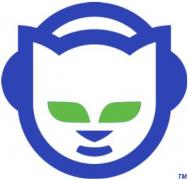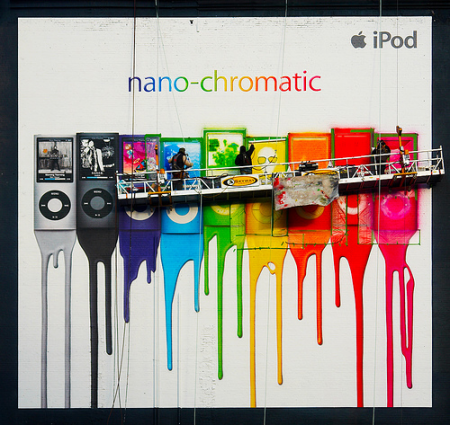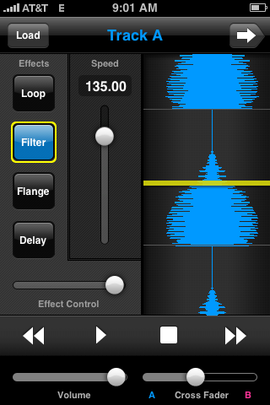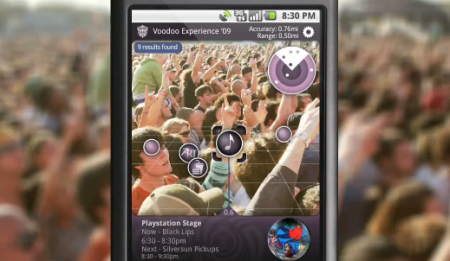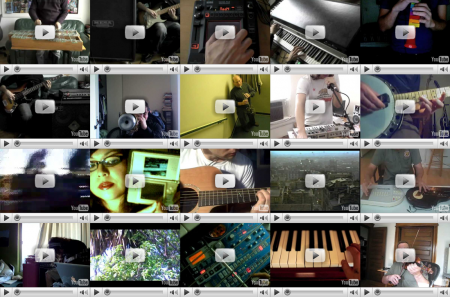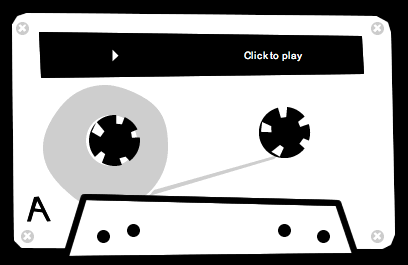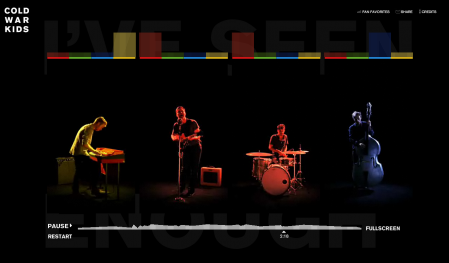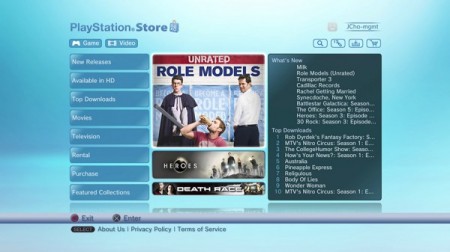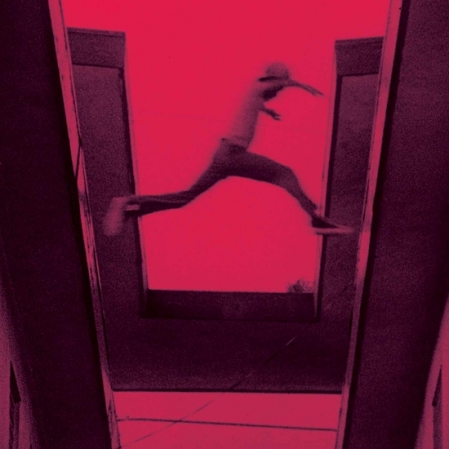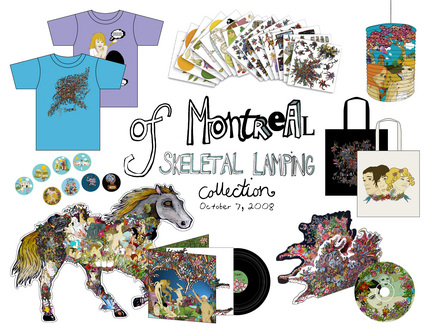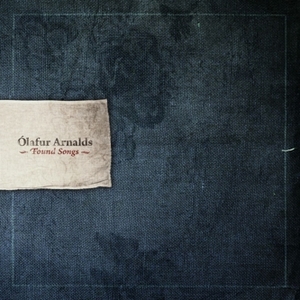Musical Chairs
Immerse yourself in the history of design on a journey through an ocean of chairs. As a company dedicated to improving the quality of spaces through the power of design, Vitra develops and produces furniture. However, the family-owned company also curates and exhibits significant architectural and industrial design at its campus and museum in Switzerland to educate and celebrate the power of design.
One such presentation is Chair Times, a documentary on the multidimensional world of chairs, featuring 125 objects from 1800 until today. Enjoy the film for free before it vanishes and disappears into the archives.
The Printing is in the Details
With a beautiful testament to Dior’s heritage and design, Shawn Stussy introduced a psychedelic-surf and beachy, and Fair Isle-style marble print for the Fall 2020 men’s show. What’s even more captivating was the thought behind the process of printing the clothing.
The designs translated to the pieces in a unique, one-of-a-kind way. They were etched — by the only House still using this technique — into wax print fabrics, “a highly complex, noble cloth,” and then, printed on the pieces in a way that can only be described as “a dialogue between Dior’s heritage and their designs.” The result is transcendent reflection of Stussy’s thoughtful design and intricate process, creating a genuinely stunning pattern with a true human touch.
Capturing Honest Emotion
The thinkers at shark&minnow were inspired by ‘Alina’— a collection of portraits that captures the resulting facial expressions of twelve women while listening to the same piece of music, ‘Für Alina.’ The work is created by Bettina von Zwehl, a German photographer who lives and works in London.
Driven by von Zwehl’s interest in psychologists’ research surrounding the ways people’s emotions are influenced while listening to music, each woman — dressed in identical white vests — listened to the same piece of music, while seated in a dark room. von Zwehl captured their images sporadically during the second half of the song, using flash photography so the background appeared white. The results were absolutely stunning and pure as the sitters’ images were captured unexpectedly, displaying an increased vulnerability and uninhibited emotional response.

The 10 Rules of Brainstorming
Unlock the Creative Power of Brainstorming & Ideation Sessions
Learn how shark&minnow approaches brainstorming by following The 10 Rules of Brainstorming, part of The Mindset Method developed by the strategy and design consultancy.
What are the rules of brainstorming?
Brainstorming is an exploratory, conceptual and collaborative ideation method for organizations to generate innovative solutions for challenges. With this insight, how do organizations effectively conduct brainstorms and what are the rules for a successful brainstorming session?
- Understand the challenge to be brainstormed and be prepared with insights from the Company, Customer, Competition, Climate & Culture (i.e. The Mindset Method). Foundational research and insights will guide your ideation session and serve as the catalyst for creativity
- Focus on the challenge to maintain scope and scale
- Diverge in thinking by ideating alone in solitude, enabling a different path to think about the challenge
- Converge in thinking by ideating as a collaborative team
- Assemble a multidisciplinary team to foster creative friction and make the impossible possible, and go beyond the unknown
- Visualize ideas to improve perception and cognition. Whether it's sketching ideas or writing notes on Post-its, document all of your thoughts
- Generate concepts and scenarios to inspire creative-thinking and reveal new ideas - as many as possible
- Filtrate: Apply strategic filters based on The Mindset Method to encourage divergent thinking within the context of the challenge (e.g. For the Company, idea based on the mission statement, or for Customers, ideate based on specific personas, etc.)
- Amplify voices to ensure all ideas are heard, and judgment is silenced. As the adage goes, you never know where a good idea will come from, so hold criticism and evaluations until later
- Build on the ideas of all participants in the session - You never know where creativity will take you
The Future of Market Research
5 Innovations to Watch
The great David Ogilvy once said, “I notice increasing reluctance on the part of marketing executives to use judgment; they are coming to rely too much on research, and they use it as a drunkard uses a lamp post for support, rather than for illumination.” Those words from the great David Ogilvy are as true today as they were then.
Market research professionals, firms and organizations from IBM to Forrester Research are projecting the next trend in market research to be “making the transformation from research to insight.” If you ask me, that’s what market research has always been. An effective market researcher should be able to plan, conduct, analyze, and report actionable market insights and solutions to clients.
If you can’t do that, you’re probably just sharing stats that you found on eMarketer. I’m not discrediting eMarketer, which is an excellent research provider, but I see many advertising and marketing professionals searching for and relying too much on the latest stat or trend instead of taking that data point and translating it to something of value. Does that trend even make sense for your client’s unique situation? Or are you simply trying to impress them? This is not a problem with the research provider, but the researcher himself.
Instead of projecting the next trend in market research to be “making the transformation from research to insight,” which should already be innately infused into the mantra of the market researcher, I project the future of market research to be the convergence, or mash-up, of emerging technologies and lateral creative thinking across industries with the discipline of market research.
We are all living in a perpetual state of beta. We all have the ability at any time, to analyze our past and present to optimize for the future. And for market researchers, now is the perfect time to seize the opportunity to innovate the industry in ways George Gallup could have never imagined. So borrow from other competitors, borrow from other industries, borrow from culture – use lateral creative thinking to expand your potential and create new methodologies to reveal new insights and solutions. Below are five examples of this approach, which will continue to grow, especially in 2012.
Mash-up: Neuromarketing
Lateral Thinking: The Convergence of Neuroscience & Market Research
What is it? How does it work?
- It has been a goal of market research professionals to better understand motivations and behaviors for years. We are always asking ourselves why someone behaves the way they do. There are traditional quantitative and qualitative techniques that allow us to better understand this, but some insights are buried deep in the subconscious part of the brain that we can’t always reach. Neuromarketing takes the discipline of neuroscience and applies it to marketing, allowing us to gain insights into the subconscious.
- Neuromarketing can be utilized via several different methodologies, each with a unique purpose:
- Functional magnetic resonance imaging (fMRI): To measure increased brain activity by detecting changes in blood flow.
- Steady state topography (SST): To measure increased brain activity by detecting brain electrical activity or neural processing speed. This is much more cost effective than fMRIs.
- Electromyography (EMG): To measure electrical activity produced by skeletal muscles.
- Facial Electromyography (EMG): To measure electrical activity produced by facial muscles.
- Biometrics: To measure human body characteristics such as fingerprints, eyes, hands, vocal and facial patterns, and even DNA.
- Galvanic skin response: To measure the electrical conductance or moisture levels of skin.
- Eye Tracking: To monitor and track eye movement in order to denote the levels of attention on specific areas.
- Who has used this?
- How can I learn more?
- Watch the TV program: PBS “Frontline”: The Persuaders Read the book: “The Hidden Persuaders”
- Read the book: “Buyology”
- Read the blog: Neuromarketing
- Read the blog post: The Convergence of Cognitive Neuroscience and Marketing
Lateral Thinking: The Convergence of Gaming & Market Research
Mash-up: Research Through Gaming (RTG)
What is it?
- Creating market research environments infused with the dynamics and mechanics of gaming in order to monitor and analyze behavior.
- RTG can be used on almost any analog or digital platform, whether it’s event marketing, Facebook or a mobile application. The goal is to create an environment with goals or achievements that the participant can earn, which encourages participation; and a metrics tracking suite that records all behavior, so that data can be analyzed following the study.
- Who has used this?
- How can I learn more?
- Follow the conversation on Twitter: #gamification #NewMR
- Read the blog post: The Future of Research Through Gaming
Lateral Thinking: The Convergence of Mobile Technology & Market Research
Mash-up: Mobile Technographic Research
What is it? How does it work?
- As the adoption of mobile devices such as smartphones and tablets continues to increase and the technology that supports these devices is enhanced, market research professions will have the ability to go native, conduct research and report results in real-time. This can include smartphone and tablet surveys, texting surveys or mobile apps.
- Who has used this?
- At a previous agency, I conducted primary research for RIDGID, using multi-touch surveys on iPads.
- How can I learn more?
- Research survey apps for tablets and smartphones in the Apple App Store, Android Market, BlackBerry App World, etc.
- Research gadgets such as microphones and camera lenses to enhance your mobile device as a research tool.
Lateral Thinking: The Convergence of Social Media & Market Research
Mash-up: Social Intelligence or Digital Anthropology
What is it? How does it work?
- Every day we share our opinions, preferences and lives with people online via Facebook, Twitter and beyond. All of our passive data, or tweets, photos and videos, are archived online by the social networks to which we belong. Social media data is insanely valuable to marketers because it does not represent our intended behavior, but our overt behavior. Social media isn’t just word-of-mouth, but passive consumer behavior and consumption translated to consumer intelligence. However, before brands can act on this, they need access to this data in order to translate it into information that can improve their marketing strategies. Therefore, brands must enact listening platforms (e.g. community managers) and data mining tools (e.g. Radian6) to gain access to this data and harness the power of social media. Social intelligence can be used to develop new products, messaging platforms or define audience personas.
- Who has used this?
- Intel
- At a previous agency, I conducted primary research for Cleveland Clinic, using Radian6.
- How can I learn more?
- Read the white paper: Forrester “Defining Social Intelligence”
- Read the white paper: Radian6 “Defining and Measuring Intelligence”
Lateral Thinking: The Convergence of Crowdsourcing & Market Research
Mash-up: Online Panels
What is it? How does it work?
- People love to hate focus groups. I think every market research professional can agree that there are positives and negatives to conducting focus groups. But the ideal environment for a focus group fosters co: (community, collaboration, crowdsourcing and co-creation). When you take that ideal concept and apply it to a closed digital environment with incentives for passionate stewards of the brand, you will be inspired with consumer insights focused on innovation for your brand.
- Who has used this?
- How can I learn more?
- Watch this video: Napkin Labs “Introduction”
Lastly, while it is not one of the innovations listed above, I believe reporting should be a priority for all market research professionals. We must always understand how to translate data to information and reveal insights that are clear, concise and simple. We've been spending the past few years, creating and refining our infographics, data visualization applications and websites to better illustrate our strategic insights. These visual representations of our insights infuse energy into our research, bringing our insights to life in a compelling manner. While the future of market research is truly dependent on mashing-up emerging technologies and market research, it’s up to the individual to harness the potential and infuse strategy and creativity into the process.
The Mashup Class
It was Richard Florida - author, professor and researcher, that coined the phrase "The Creative Class." A concept that identifies the essential elements required for urban revitalization: Technology, Talent and Tolerance - The three Ts.
Cities must invest in technology, nurture talent and be tolerant or accepting of diversity for creative people to come live, work and play. The growth and prosperity of a city is dependent on these attributes because they attract a unique group of people – The Creative Class. This concept fascinated me for the past six or seven years, it occupied many of my thoughts and influenced many of my actions during a time when I moved from Detroit to Boston to Cleveland.
Another concept that I've been following for the past few years is The Creator Class. Another set of three words enriched with alliteration: Creators, Communities and Companies - The three Cs. This concept was devised by Piers Fawkes of PSFK, it analyzes the intersection of these areas and how they affect culture.
Members of this community leverage digital distribution, thrive in niches, market via networking and collaborate. I found this concept particularly interesting when looking at the world of advertising, due to the creation of new agencies like Victors & Spoils, co: and Made by Many, and also open innovation groups like The PurpleList or Behance Network. However, it was another kind of Creator that attracted my attention and ignited my curiosity over the past few years: The mashup artist. People like Banksy, Poster Boy and Girl Talk, who blurred the lines of creation by mashing original and borrowed works to a point where the originator was indistinguishable and remixed everything, even culture.
I am anxious for more artists to use multidisciplinary tools and harness the power of technology to remix our world and mashup production, consumption and distribution. And it's happening now, you are the artist and consumer.
Press Pause Play
Press Pause Play is a documentary that introduces the creatives at the frontier of production, the technical enablers of collaboration and distribution, the artists, the pop stars, the film makers, the business men, the visionaries and the ones left behind. Itʼs a story from the smallest molecule to the largest corporation. Itʼs a snapshot of today, but at the same time predictions of a near future.
A new generation of global creators and artists are emerging, equipped with other points of reference and tools. The teachers are not certified schools anymore - itʼs web sites, discussion forums and a “learn by doing”-mentality. We see the children of a digital age, unspoiled or uneducated depending on who you ask. Collaboration over hierarchy, digital over analog - a change in the way we produce, distribute and consume creative works. Press Pause Play is an amazing documentary that will inspire any creator or mashup artist.
Collaborate and Remix Life
Walking on Eggshells: Borrowing Culture in the Remix Age is a documentary about appropriation, creative influence, re-use and intellectual property in the remix age. It is a conversation among various musicians, visual artists, writers and lawyers.
Remix Everything
Remixing utilizes the techniques of copying, transformation and combining; with all creations infused with inspiration from another work. Everything is a Remix is a four-party documentary. At this moment, only three have been published:
The Future of Art & Ideas
This video from the New York Public Library features Larry Lessig, founder of Creative Commons and author of "Remix," Shepard Fairey, artist and founder of OBEY, and Steven Johnson, author of "The Invention of Air." This panel answers the question, "what is the future for art and ideas in an age when practically anything can be copied, pasted, downloaded, sampled, and re-imagined?"
The Mashup Class
After researching all of the sources above as well as many other reference materials, several key elements or trends were revealed. The idea that a breed of individuals exist that thrive in remixing and mashing up culture - The Mashup Class. And this is not limited to street art or music, it extends to the arts, business, technology and beyond. This culture has innate motivations and identifiable behaviors:
- Collaboration - Many people think that mash-up art is created by stealing, but it is actually the greatest collaboration between artist and the beholder. Collaboration is an action where creative inspiration adapts and evolves to create something new.
- Community - This is naturally created during collaboration, but also when the creator pays homage to those that inspired them
- Culture - Inherent in this practice is the association to pop-culture and act of borrowing cultural references as need to inspire or express. Cultural and historical references are your canvass and influencers are your inspiration and instruments. Crowdsource - Inspiration is not pulled from one, but many sources. Crowdsourcing is not always a visible action, but can be covert
- Openess - Transparency is not necessary, everything can be reverse engineered, whether purposely made available or not
- Defiance - In order to be innovative and creative, you must, at times, break the rules. And also, be willing to pay for the consequences
- Transform - According to copyright laws, the extent to which a work is deemed transformative will determine if the work is fair use. However, the expression and interpretation of art is native to the individual, the means by which language is translated or transformed from one to another. Originality is not a goal, plagiarism is not a fear, and authorship becomes unknown as the line between author and orignator is blurred.
- Instrumental - Technology has created an endless number of new tools and instruments for artists to use.
- Craft - Often the craft is learned through the process and individuals are self-made. Just as experise in the craft increases over time, so does respect for the craft
- Share - The old distribution model is dead, sharing works digitally is the new methodology for exposing others to your works
- Create - Be prolific and continue to remix and be creative
Intentionally Passive Music Composition
Intentionally passive music composition has interested me for quite some time. This is the idea that we can create music by strategically planning for specific outcomes to create beautiful music; such as harnessing gravity, nature or the elements to create music organically.
One of my favorite recent examples of this is Conductor, which harnesses the NYC subway system and turns it into an interactive string instrument. Using the MTA's actual subway schedule, the piece begins in real-time by spawning trains which departed in the last minute, then continues accelerating through a 24 hour loop.
Read more about music composition in the digital age here.
A Digital Rolling Stone 3.0 - Composition in the Digital Age
Inspired Creation
In this installment of A Digital Rolling Stone, we analyze the composition and creation of music in the digital age. If you are a musician, you know that the process of composing and creating music is difficult, demanding and at times, frustrating. However, it is also exhilarating and inspiring; especially during collaboration or improvisation. Similar to many musicians, I love jamming with friends and creating something new - challenging myself to play something I have never played before or anyone has heard. In science, improvisation is experimentation; and musicians follow a similar scientific method:
- Define the musical challenge
- Consider and select instrumentation (or media)
- Hypothesize how the media will affect the composition and sound on a macro and micro level
- Perform the experiment by playing and reacting to pitch, rhythm, dynamics, visual movements and the mood
- Analyze the expression of logic and emotion
- Interpret sound and draw conclusions to create a new hypothesis
- Store in memory, perform live or record
- Practice
For me, I find step two to be the most interesting. The consideration and selection of instrumentation or the media that creates the layers of sound, is the point where true creativity is actualized. At MSU, my art professor showed us a documentary film on Fred Frith (an experimental musician and composer) called "Step Across the Border." The reason he showed us a film about music in art class was because Frith challenged the historical notion of music by reconsidering harmonies, melodies and instrumentation to create something creative and innovative. Beyond the known.
This approach may yield unusual or uncomfortable results, but if you embrace the unknown and explore, you will reach great heights. Some may view this form of creativity to be limited to artistic expression only and unable to reach commercial success. Depending on your aspirations, this may or may not be important to you. Regardless of your intentions, audiences will adopt artistic expression similar to the diffusion of innovation, such as in the case of art by Pogo with the visual, musical mash-up called Alice or his most recent creation, Gardyn. This art later inspired Craftsman allowing them to experience great commercial success with their contagious online video.
How does this notion apply to musical composition in the digital age? As a musician, it is important to understand how you can change your perspective and expose yourself to opportunities that may inspire you. From a commercial perspective, Craftsman was able to do this by taking inspiration from Pogo's art. Lastly, the ability to utilize available digital technologies as media, is essential in composing music in the digital age.
Art in Translation
Within the past 6 months, I have found several examples of digital music composition as art installation, such as 40 wild birds playing a Gibson Les Paul. This showcases how nature can provide new layers for instrumentation; other examples include the sun or even rain. These examples exhibit music composition in the digital age, however reveal an interesting and important insight - that idea that music can be composed passively rather than actively. Also, new layers of instrumentation using digital technology can also allow one to invent new instruments.
Digital Instrumentation - Intentionally Passive
The disciplines of science and technology with artistic expression converged in the mind of Kawase Kohsk when he created BEARINGS GLOCKEN, a musical instrument that automatically performs a glockenspiel using steel ball bearings. The music is created after calculating the relationship between the ball bearings and intentional path. An interesting note from the creator is that people "have fewer and fewer chances to experience live performance. These days we can even listen to music on mobile phones. But, I want people to know the richness, power, impact, and vividness of sound created right before your eyes."
Digital Instrumentation - Gestural Interactions with Sound
Back in the day when you wanted to start a band, you searched for friends that played guitar, bass, drums and someone that could sing. Now, all you need is your computer. In my eyes, this does diminish the creativity and spontaneity that comes from colliding musical visions between opposing artists, however technology has provided a new canvas with multiple dimensions. This can be as basic as a "simple sinewave synthesizer triggered by an ordinary 16 step sequencer," also known as the ToneMatrix. I found this synthesizer a while ago and became addicted. This synthesizer from aM laboratory by Andre Michelle, interprets user interaction and creates a revolving, dynamic wave of music. This idea is taken to the next level with the Artikulator, a multi-touch musical instrument created by "Mike Rotondo and Luke Iannini in about 24 hours during a Music Hackday, a series of events that combines art and technology with fascinating results" (via Mashable).
A new company called Liine, whose "aim is to redefine the way people interact with sound," has created a new digital instrument called Griid, an expressive and tactile live performance app for the Apple iPad, iPhone or iPod Touch. Imagine taking the ToneMatrix or Artikulator and mashing it with a turntable. According to this article, Richie Hawtin, a well-known Canadian DJ who has been influential in the Detroit techno movement, previewed Griid at the Movement: Detroit Electronic Music Festival before his performance. As mentioned earlier, improvisation is experimentation. And for a DJ, experimentation and adaptation is your platform for performance. Dynamic musical performances created by user interaction on the digital app Griid enables true improvisation during live performances.
Sadly, at the end of June, Hawtin reported that someone stole his Macbook, two iPads and iPod from his hotel shortly after announcing the Griid in Paris. No longer will thieves steal distortion pedals and guitars, but instead your digital, computerized instruments.
Digital Instrumentation - Physical Interactions with Sound
The Eigenharp is an electronic musical instrument that allows musicians to play and improvise via expressive physical interaction, creating a limitless range of sounds. According to the Eigenharp website, it "can play and record loops, change scale and key, transpose, alter tempo, program beats, create arrangements, switch and layer multiple sounds, all while the musician is performing live on stage."
This next example of physical interactions with sound is for entertainment value only, however very creative. This creativity allowed Nike to break outside of the norm and re-imagine what their shoes could be to create an analogy and communicate the essence of the product - freedom to just do it. Obviously these shoes do not make music when bent or twisted, but creativity, imagination and physical interactions allowed Nike to create an entertaining, contagious video that made many people wonder, how did they do that? And the video has received almost 800,000 views on YouTube.
Digital Instrumentation - The Algorithm
If Google created a musical instrument, it would be Tristan Perich's 1-Bit Symphony, an electronic composition in five movements on a single microchip. As described by Perich, though the composition is "housed in a CD jewel case, 1-Bit Symphony is not a recording in the traditional sense; it literally 'performs' its music live when turned on." Perich programmed and assembled the electronic circuit utilizing "on and off electrical pulses, synthesized by assembly code and routed from microchip to speaker, to manifest data as sound."
Digital Collaboration
All the examples presented showcase the vanguard of digital instrumentation. But how can we take these new methods and instruments and compose music in a way that would reflect the digital age? In a Wired article titled "Help Wired.com Crowdsource This Song" by Eliot Van Buskirk, we get a preview of a new musical environment that supports collaborative music creation online - Indaba.
When I lived in Boston, I was in an indie post rock band. We toured the midwest and eastcoast, everywhere from Boston to New York to Philly to Madison to St. Louis. We even recorded an album and released it on vinyl with a digital download. However, I moved to Cleveland and our lead guitarist, Danielle (Danielle was on my SXSW Interactive Festival panel "Big Brother in Your Brain: Neuroscience and Marketing") moved to Charlottesville. So that was it, our band broke up. However, if we could remove the barriers of space and time, we could play again. Many musicians have experienced this, and many have dreamed of Indaba. This new common ground for musicians, combined with the accessibility to musical inspiration worldwide, allows musicians to transcend many of the restrictions that have been in place for years. Let there be music.
A Digital Rolling Stone has sustained the hypothesis that IF the music industry wants to be profitable and relevant THEN the music industry must progress with and reflect culture while integrating technologies that create an augmented experience for the music enthusiast. The future of music composition is bright if musicians and inventors continue to work together and create new instruments like the examples mentioned above. All of these reflect cultural trends and integrate current technologies to expand instrumentation and further the advancement and innovation of digital music.
Unconsumption
Overview
When we were kids it was pretty much beaten into us that planet earth was in danger + the only way to save the planet was to "Reduce. Reuse. Recycle." Perhaps because we learned this at a young age it's second nature for us to want to limit the amount of "stuff" we contribute to landfills. In the rare instances where a recycling bin isn't near and we, frankly, don't feel like carry garbage around with us for hours, we toss that bottle into the trash with a healthy feeling of guilt. We know that not everything we throw away is "waste" - and our actions could be a lot less wasteful.
To this end, we've been thinking a lot about the idea of unconsumption and have been for quite some time now. During our trip to SXSW 2010, we had a chance to sit in on the panel of Dr. Nita Rollins from Resource Interactive to hear her perspective on "Digital’s Emerging Role In Unconsumption." Before we analyze and share insightful findings from Dr. Rollins, we will first beging with an analysis of "The Unconsumption Project" by Rob Walker, author of the New York Times column, Consumed; blog Murketing [The Journal of] and book "Buying In."
The Unconsumption Project
According to Walker, unconsumption is:
"a word used to describe acts of acquisition – generally, the acquisition of things, in exchange for money. Unconsumption is a word used to describe everything that happens after an act of acquisition. Unconsumption includes making things last, finding new uses for them, or, when they're used up, getting rid of them in the most responsible way. Lots and lots of thought and energy and money goes into creating “meanings” for consumption, but what about these unconsumption ideas? Can they be done in a meaningful way?
Walker further explains in his first NYTimes article on unconsumption that:
“Getting new stuff can feel really good. Most everybody knows that. Most everybody also knows ... that utility can fade, pleasure can be fleeting and the whole thought-that-counts thing is especially ephemeral. Apart from the usual solution to this problem (more new stuff!), it’s worth pondering whether getting rid of stuff can ever feel as good as getting it.”
Digital’s Emerging Role In Unconsumption
Dr. Rollins' panel focused on this topic mostly as it pertains to consumer behavior, both during + post-recession. Some interesting stats to put this into perspective: “Sales at Goodwill stores grew 7.1 percent in the first three months of 2009. Craigslist saw 100 percent increase in bartering. And companies began to launch campaigns to appeal to the frugal consumer, like the Babies 'R' Us trade-in where customers brought in old car seats for discounts on new goods” (via Huffington Post). You see the trend emerging...
For many, this behavior is mandatory. But, for others, it’s trendy. Remember all those celebrities and their plain white shopping bags a few years ago? How about this recent (more ironic) find. Nobody wants to be seen as a “have” in a world where most of those that make them successful are “have nots.” The same holds true for brands. But it’s not just an image play – what companies also have to deal with is how to stay profitable when their target audience seemingly can’t afford to buy their product. Dr. Rollins identified "Digital Forces" and "Consumer Actions" that support unconsumption. View the SlideShare presentation above for more details.
Digital Forces
- Radical Transparency
- Disintermediation
- Freeconomics
- Network Effect
- Dematerialization
Consumer Actions
- Reduce
- Reuse
- Recycle
- Refuse
- Make
- Sell
- Swap
Of these unconsumption forces and actions, it was interesting to hear Rollins assessment of the demise of greenwashing due to radical transparency. While we do agree, most organizations still have not completely adopted radical transparency and utilize selective transparency. However, as previously mentioned, Rollins' focus was about reaching the consumer, branding, and allowing that branding to do the heavy lifting of motivating that unconsuming consumer to action. Below are her suggestions for how to appeal to unconsumers:
- Clarify what you mean by “sustainability”
- Incorporate sustainability into your business’ operations, communications, and tactics
- Provide consumers with the option to rent rather than buy
- Think about selling “vintage” products
- Look to de-sanctify your packaging – understand it is trash if you don’t specify another use (i.e. art)
- Support swapping on-site
Even with the recession starting to soften, Dr. Rollins asserts that brands need to be aware that this trend is strong and, while it may diminish, certain brands will need to address this mindset present with their target audience for years to come.
Divergent Perspectives
There is one word that separates the beliefs of Dr. Rollins and Walker on unconsumption: brands.
From Walker:
"People can do what they want, I guess, but I should probably go on record as saying that it sounds to me like this version of “unconsumption” has nothing to do with The Unconsumption project that I’m involved in. My view, for the record, is that brands can’t “embrace unconsumption.” The last thing in the world that I had in mind with the Unconsumption project was coming up with some sort of shorthand that would help companies move more newly manufactured branded units. The unconsumption idea isn’t meant for brands, or people who make a living by burnishing brands. It’s meant for the rest of us. (via Murketing).
From Dr. Rollins
"...unconsumption...finding clever new uses for old, discarded, outmoded consumer goods--this is it. There were several of these uncanny flower pot cars in Uruguay's historic port town. Unconsumption is a trend known by many names, many of which begin with "re"--as in reuse, recycle, etc. The more inventive the reuse by the "unconsumer", if you will, or the more frequently a consumer releases her possessions into the ceaseless flow of capitalist goods so someone else can use and appreciate them, the easier her conscience about wanting something new. The environment is not the only beneficiary of this trend; so is the consumer on the receiving end of these repurposed, recirculated goods, if she is inclined to search for storied goods." (via Nita At Large).
With these two perspectives known, it is up to your subjective interpretation whether unconsumption can be used in branding. Maybe the case studies below can help you reach a conclusion.
Art & Music
In researching our "A Digital Rolling Stone" project, we also found a few methods of unconsumption in the music industry. Vinyl jewelry from Cat Division.
Also, Atlanta-based artist Erika Iris Simmons (iri5), has been creating beautiful portraits of musicians and bands like Robert Smith and The Clash out of cassette tapes as part of her "Ghost in the Machine" project. Her reason for the medium: "The idea comes from a philosopher's (Ryle) description of how your spirit lives in your body. I imagine we are all, like cassettes, thoughts wrapped up in awkward packaging." We had the pleasure to trade art with Erika a few months ago, we gave her a vinyl LP record of Eric's band from Boston and she gave us an original composition created with paint and sheet music. Unconsumption can also create friendships.
Notebooks
Sorry Moleskin and Field Notes lovers, let us introduce you to your new crush. Anti-System Skateboard Notebooks made from recycled skateboards and Lego Notebooks made from recycled Legos.
Fashion
Wrath Arcane
One of our favorite clothing companies, Wrath Arcane: "WRATH ARCANE will be launching 'THE DREDGERS UNION' (*exact date TDB, likely summer 2010). This line will feature new mens and womens styles made from salvaged fabrics. Goods will retail for $65 - $75 for wovens/hoodies/bottoms, with the most expensive outerwear being around $195. All of the line will be MADE IN USA."
Score!
Score! is not your typical swap. In fact, it more closely resembles a pop-up free store: Attendees donate their goods, volunteers sort and display these items in themed “departments”, and attendees have the option to browse and take whatever they like… for free! It’s essentially a giant party — music, drinks, live screenprinting, photographers taking pictures of stylish “scored” outfits, etc. (via Score!)
Philanthropy
Hello Rewind
Hello Rewind, who has taken it a step further and woven in a philanthropic component. What they do: "Turn your old t-shirt into a custom laptop sleeve + support new life for sex trafficking survivors." There are certainly lots of companies/individuals that are finding ways to recycle clothing, we just happen to really dig the spirit + overall nature of this program.
Medwish International
Also on the non-profit tip, Medwish International keeps functioning medical aid equipment/supplies out of landfills and instead deploys goods to developing countries who are in need of such tools.
Matter of Trust
Perhaps the most timely example is Matter of Trust's efforts of recycling your discarded dog/cat/other animal fur to help absorb the oil leaking into the Gulf of Mexico. No business goal - this is purely non-profit, but nonetheless hugely important + impactful.
Health Insurance
The last industry that we expected to adopt the unconsumption mindset and methodology was insurance. However, health insurance and unconsumption is actually a perfect pairing. Recently, we received a direct mail piece from Anthem Health Insurance and were surprised to find a ecological message: "Take the go green eco-challenge and get weekly emails that will show you how to lead a healthier life. Plant this recycled postcard in shallow soil. Add water and sunshine. In six to eight weeks, enjoy wildflowers." A beautiful idea.
Furniture
A Piece of Cleveland (APOC)
APOC loves Cleveland. Its history, its character and its potential. APOC was created to preserve this rich history by telling a story and turning unwanted materials into something better than they were before. Every product that they offer is made from materials carefully extracted from office buildings, residential homes, churches, schools and other historical structures in the city. Countless people, maybe some who were our ancestors, have walked on, sat in, and used the materials that we are rescuing to create our products. By using durable and beautiful wood, glass and metals found in these buildings, legacies are allowed to live on.
Coca-Cola
Technically, this case study exhibits the recycling of consumer product goods (CPG), however it also integrates a well-known furniture designer. Coca-Cola recently unveiled a partnership with Emeco to create a sustainable chair made out of recycled Coke cans and bottles (via Buzz-Beast). Each chair will be made out of rPET derived from 111 recycled plastic Coke bottles. The chairs will be available for sale in June 2010 in select retail locations worldwide and can also be ordered by sending an email to coca-cola@emeco.net. This initiaitve benefits both companies.
“The 111 Navy Chair is a reflection of our commitment to sustainability, constant innovation and originality in design. This latest addition to our line of rPET licensed merchandise underscores the fact that Coca-Cola bottles are valuable recyclables. It is another step in our vision to recover and reuse all of our bottles and cans.” Kate Dwyer, Group Director of Worldwide Licensing for The Coca-Cola Company.
Conclusion
Regardless of whether you believe unconsumption can be utilized in branding or not, it is a powerful movement. Unconsumption is creative thinking in action. It's a response to the needs of our ecosytem and a moral responsibility each of us has to ensure a sustainable future. And we can't get enough of it! If you've seen something interesting in the unconsumption vein, leave a comment so we can check it out.
A Digital Rolling Stone 2.0
Introduction
It seems only appropriate that I'm finally finishing the second installment of A Digital Rolling Stone, a month after the tenth anniversary of the Recording Industry Association of America (RIAA) suing Napster for allowing millions of consumers to download free, copyright music. The result as you know, was a federal judge and appeals court finally ruling in 2002 that Napster was liable for contributory copyright violations. This marked the beginning of my fascination with the progression of music culture and marketing. However, it was my love for music that actually introduced me to advertising and marketing. It was interesting to observe how Napster affected consumer behavior and perceptions, the practice and business model of music and caused great controversy.
Within the music industry, musicians shared divergent ideologies. Artist such as Dr. Dre and Lars Ulrich (Metallica) insisted that peer-to-peer (P2P) file sharing would ruin the music industry and asserted that this belief was not based on profitability, but control over their creative expression. Also, along with the RIAA, many musicians attacked consumers with trial court orders. I'm not sure if this really supports their argument for creative expression over profitability, unless of course they just wanted justice. And they got it.
Napster became a part of pop culture and died the death of a pop star - abruptly and at a young age. And so did many of Napster's successors like Gnutella, Kazaa and BitTorrent. And worst of all, MP3s and P2P sharing changed consumer behavior and perceptions immensely and left consumers without any source to fulfill their music needs and desires. These changes include:
- Acquisition & Accessibility: Consumers no longer visit brick & mortars, but instead download music online
- Emotional Response: Digital music provides instant gratification for consumers, as they can download music when they want, wherever they want. While traditional forms require patience, which is not common in the digital age
- Morals & Ethics: Consumers were accustomed to downloading music illegally instead of purchasing the music and did not question their behavior, until they were attacked by the industry
- Decision Making Process: Consumers were influenced by online friends that shared similar music tastes
- Convenience & Portability: The actual tangible element changed from CDs to a digital form as MP3 files, making it much easier to transport and experience
- Listening: Consumers no longer listened to albums as complete compositions, but instead as individual songs in random order (e.g. shuffle)
- Form & Function: Historically, consumers collected the jackets/sleeves of records and even CD cases, however since the tangible element has changed, many consumers no longer value the form, but only the function (however vinyl records are making a comeback, more on this later)
This also changed the practice and business model of music forever, specifically in regard to the marketing mix:
- Product: While the actual cost of producing music did not change much, the process of producing the music form and distribution changed dramatically (e.g. CD to MP3)
- Price: Instead of purchasing an album for $10 or $12, consumer began to purchase individual songs at $0.99. It was a return to the days of 45 RPM records, when artists released singles. However, due to the distribution method, it was even more compelling and convenient for the consumer to accept this pricing structure. Also, as musicians began to realize that illegal downloading was hurting their bottom line, they changed their marketing strategy and began to focus more on concerts and apparel as a form of revenue
- Promotion: Promotional tactics also changed immensely with digital technology. Before the internet and Napster, bands had to create press kits to get shows, promote shows using posters, tour relentlessly and pray that a record label would catch them at a show. However, Napster allowed consumers to view and download music files on their friends' computers and word of mouth (WOM) became a powerful factor in the marketing mix. Social media sites like MySpace and Facebook allowed bands to create profiles and share their music online to a broad audience without getting a record deal and in some cases it facilitated record deals. Consumer behavior became the source of WOM in cases like iLike, Last.FM and Pandora.
- Place (Distribution): Consumers could now download music whenever and wherever they wanted and in some cases could work directly with the artists they loved
As a music enthusiast and musician, I have a unique perspective on this topic. I believe that everyone should have accessibility to not only music, but all arts: dance, literature, film, photography, paintings, etc. The arts provide an experience unlike any other, experiences that are:
- Entertaining: The inherent ability of the arts to stimulate all five of the senses (sight, hearing, touch, smell, taste) and in a manner that can affect your emotional and rational state of mind
- Inspirational: The chord progression of an orchestrated composition or punk-rock anthem, a Van Gogh or Dondi; or a sonnet or manifesto can inspire you to view the world from a different perspective and develop innovative ideas
- Educational: The arts enhance critical thinking and teamwork skills in students. More specifically, learning and performing music as well as attendance at music performances improves reading, math and science skills in students
While I do believe everyone should have access to the arts, I also believe there is a compelling business opportunity to inform and persuade the consumer, even during this consumer behavioral transformation and digital movement. This intriguing transformation inspired me to approach this problem and find a resolution during my experience in the Master of Arts in Advertising program at Michigan State University years ago; here are my results. I then approached this problem again in a blog post titled "A Digital Rolling Stone 1.0." In this analysis, I hypothesized that the music industry must progress with culture in order to remain profitable and relevant by reflecting cultural trends and integrating technologies that create an experience for the consumer with added value. This hypothesis was composed over a year ago and I have collected several case studies that document this consumer behavioral transformation in regard to music and the brands that have effectively progressed with culture to create augmented experiences for the consumer. Also, in the case studies below, I have also identified the casual attributes for marketing success and recommendations to continue these innovations in the music industry. Lastly, unlike artists before them, artists such as Radiohead and Trent Reznor of NIN understood not only the consumer, but the future of music. They paved the way for many musicians to find a sustainable business model in the digital age and seize OFF=ON opportunities.
Applications
As music aficionados continue to battle over the death of the album or resurgence of vinyl, there are several cases that show interactive and mobile applications are emerging as a viable form and part of the marketing mix for musicians. Deadmau5, a Grammy-nominated electronic artist created an iPhone app, available on iTunes for $3, that allows users to mix and remix every song on the album. Users can modify the beats-per-minute, apply effects, loop and cross fade between tracks that they create (via Wired).
In addition to releasing "The Slip" online as a free download and under a Creative Commons license (attribution-noncommercial share-alike) allowing fans to create derivative works for non-profit use as long as the source is attributed. Trent Reznor of NIN has created many innovative experiences for fans. One of which includes NIN Access, a GPS-enabled iPhone app that allows fans to post messages or photos and communicate with people in the same geographical area via the app. It is completely integrated with the social media platform on NIN.com and utilizes many open source APIs (e.g. Flickr, YouTube, Google Earth, etc.) to extend the NIN experience across multiple platforms, not just NIN.com. As culture and technology continues to evolve, so will the music industry. This evolution provides more business and marketing opportunities for artists. As Reznor stated in a Wired interview, "As an artist, you are now the marketer."
Augmented Reality
Augmented reality (AR) been all the rage for the past year or so with brands like GE and BMW creating amazing experiences for consumers; however, could AR apps be just another fad? Do they really provide value to the consumer? What are the benefits? AR can provide value if the idea is inherent to the product or service. For example, Yelp provides consumer reviews and local search capabilities for users on Yelp.com. The Yelp mobile app provides the same thing, however it includes augmented reality, allowing users to utilize their handset's built-in camera to visually experience consumer reviews and local search. The AR is the service and the service is augmented with AR.
How can musicians apply augmented reality to enhance their product? Zehnder Communications, an advertising agency in New Orleans, did just that. Zehnder created the Voodoo app using Layar 2.0 (an augmented reality browser) to allow festival-goers to view artist information, concert schedules and stage locations using Android smart phones or Apple iPhones. View a demonstration of the app here. The key with AR is to not only make it entertaining, but also useful.
Crowdsourcing & Content Curation
In Bb 2.0 is my favorite interactive music experience created thus far. It is a collaborative movement initiated and created by Darren Solomon from Science for Girls, and brought to live by combining the contributions of a community. Multiple YouTube videos of instruments, voices or sounds in Bb, are combined on one page. This allows the User to simultaneously play and mix sounds at their own discretion to create a new composition. It all started out with a few YouTube videos that Solomon recorded of himself playing instruments (glass marimba, electric guitar, Kaoss Pad/synth, Rhodes electric piano, and the electric bass) in Bb, at no specific tempo or groove. Solomon then utilized crowdsourcing and called for submissions online for people to record their own YouTube videos and the movement of In Bb was born.
The composition of music can be a personal experience or one shared with others through collaboration. Artists like Darren Solomon or those musicians involved in the YouTube Symphony Orchestra embrace collaboration. Another example of crowdsourcing with a bit of content curation is Taped Together by Maria (@brainpicker) & Mel (@melex). Imagine creating the perfect playlist and then allowing people to reflect upon their selection, all online, bringing you the modern day mixtape with emotion. The concept is best explained by the creators:
"We... love music. And we think crowdsourcing and content curation are two of today's most powerful cultural propellers – seeming opposites with an even more powerful intersection. So, we're doing the obvious: Crowdsourcing a seasonal playlist from interesting people we know. Each day of December, we're uploading one season-inspired song, curated by a different person. On December 31, we're putting the compilation together as the world's first crowd-curated holiday playlist for anyone who wants one."
Exclusive Content
Many professional and indie artists have argued that record labels are no longer needed in the current music environment, however there are some record labels that are doing their job. According the the Paste Magazine article "EMI Becomes First Record Label to Provide Hulu-Exclusive Videos" written by Christina Lee:
"EMI has struck a deal with Hulu to become its first record-label partner, and is set to distribute music videos and concert footage exclusively through the video-sharing site."
This exclusive video content included in Norah Jones' new video and never before seen footage from a previous concert. This is a great idea, however P2P downloading could become a competitive force if not implemented or enforced effectively.
Interactive Experiences: Video Kill the Radio Star
The Cold War Kids took the basic idea of multi-track recording and created an engaging, interactive music video that is brilliant. In "I've Seen Enough," each of the 4 musicians in Cold War Kids have 4 pre-recorded audio tracks with corresponding visual performances resulting in 16 total different performances and allowing the user to explore and re-create 256 permutations of the song ranging from the album version to acoustic versions to solos.
Like the Cold War Kids, the current music video format just wasn't enough for AC/DC. So they turned to an unlikely source of inspiration for their music video "Rock N Roll Train": Microsoft Excel. While the AC/DC concept is not nearly as interactive, it does have a true lo-fi feel that anyone would appreciate.
Lifestyle Integration
Among the many elements that must be analyzed when considering brand extensions, it is important to analyze not only consumer behavior, but lifestyle. Sony PlayStation did this when they created the online service to sell books, videos and music (via Engadget). Gamers are a captive, passionate audience at their consoles playing video games for hours on end. This is a great opportunity to integrate product into the experience. Another example of lifestyle integration for music is skate videos. Growing up, my friends and I would watch skate videos before and after every skate session, and many of the songs featured introduced me to new artists and genres that would later shape my love for music. It's a powerful opportunity that leverages contextual relevancy to ultimately affect and influence consumer overt behavior by simply making the information accessible.
OFF=ON
The greatest movement for music in 2009 was the transformation of music as sound to integrated experiences, offline and online. One artist that adopted this OFF=ON approach was Mos Def with his release of the album "The Ecstatic" as a music t-shirt. In collaboration with Invisible DJ and LnA Clothing, Mos Def created a t-shirt that had a download code on the tag of the t-shirt with album artwork on the front and track listing on the back. I think this is a brilliant idea, however hope other artists utilize the opportunity to its full potential by embracing the concept and creating fashion instead of simply placing artwork on the front. Nonetheless, this is a perfect example of integrating analog and digital.
Another case study is Of Montreal's release of the album "Skeletal Lamping" as a complete package. According to the Paste Magazine article "Of Montreal reveals Skeletal Lamping package details" by Michael Saba:
"Of Montreal's stated mission with this ambitious release is to 'expand the perception of music packaging beyond traditional flat, square artwork and to bring consumers back to record stores to get it.' In other words, Of Montreal wants to save the record."
And I believe they accomplished this for their audience. The unique package included a CD, LP, poster, tote bag, t-shirt, button set, paper lantern, wall decal set and download of the album.
Open Source
To launch (RED)Wire, a digital music magazine, (RED) partnered with Modernista! and Evan Roth to create the first music video with open source code available to download. The music video is for "Brooklyn Go Hard" by Jay Z. Not only is the song great, but the video created with the typography of letters from the word "Brooklyn" is one of a kind and leaves you wondering what will come next for music videos. The open source feature also allows the song to permeate throughout the interwebs as individuals download the code and customize. On another note, Evan Roth is also the creator of the EyeWriter Initiative, make sure you check it out.
Social Media
Iceland has produced some of the most creative and innovative musicians in the past 20 years including Björk, Múm and Sigur Rós. Further, it has produced an artist, Ólafur Arnalds, that harnessed the power of social media to create an unprecedented connection and relationship with music fans.
In a More Intelligent Life interview titled, "The Q&A: Ólafur Arnalds, Musician, Experimentalist," Paul Sullivan writes that:
"After an equally compelling follow-up EP, Variations of Static (2008), Arnalds embarked on a more experimental project, which involved creating a new song every day for a week, and then immediately making it available online at foundsongs.erasedtapes.com. The project, called Found Songs, earned attention by making use of social-networking tools such as Facebook, Twitter and Flickr (on which Arnalds ran a forum/competition for corresponding artwork). Erased Tapes Records , an independent London-based label, recently released a CD, download and 10" Vinyl edition (which features seven photographs chosen from the Flickr group).
Arnalds leveraged social media and crowdsourcing to develop a magnificent composition that involved fans in the creative process, fostering a close relationship with the artist and providing a sense of ownership. Thus translating to increased interaction and encouraging word of mouth to extend the project throughout the interwebs.
Conclusion
At the close of 2009, as many people prepared for the upcoming decade, many also reflected on the past decade. In a segment from NPR's All Things Considered titled "The Decade In Music: How Musicians Create," Jacob Ganz reflected upon the digital decade and how it changed the experience of making and distributing music:
"Maybe the best way to sum up the reality of the music industry in 2009 is a Steve Albini interview with musician Ian Svenonius for VBS.tv. Keep in mind: Albini recorded classic albums by the Pixies and Nirvana and has always loudly favored analog recording. But he says the current digital trends don't bother him.
"I see these changes as changes that are happening outside of me, that I have no control over," Albini says. "So I basically treat them like the weather. Like, it's going to be kind of bloggy and MP3-ey for a while."
The music industry spent most of the past decade caught outside without a raincoat. Record labels, especially the big ones, didn't embrace digital music at first. In fact, they spent a lot of time and energy suing the source of their income: consumers."
I hope that the record labels learned from the past decade, but more importantly, I hope that the artists have learned that music whether they like it or not is their product, and can be extended regardless of the popular format of the moment because it will change. CDs are going the way of the cassette and soon MP3s will follow a similar course. However, artists will always have their product to market and must find a sustainable model that reflects culture and integrates technological innovations to seize OFF=ON opportunities.
And if all else fails, follow The Fiery Furnaces lead and release a silent record.
